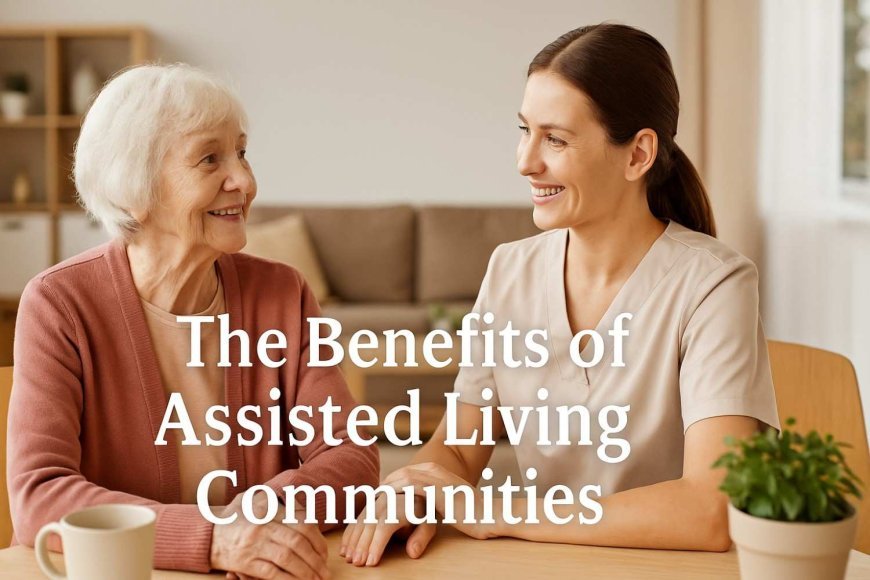The Benefits of Assisted Living Communities

Introduction: Why “Assisted Living” Isn’t a Four-Letter Word
We live in a society that fears two things equally: clowns and growing old. While clowns get all the bad press (and, frankly, deserve most of it), aging sneaks up with quieter tricks—like arthritis, misplaced car keys, and the sneaking suspicion that Netflix has removed every show worth watching. For families navigating senior care, Assisted Living often enters the conversation reluctantly, as though it’s some shameful secret. But here’s the twist: Assisted Living communities aren’t sad warehouses of decline. They’re often vibrant, supportive, and—dare we say—joyful spaces where life regains its rhythm.
Safety First (Because Rugs Can Be Villains)
The first and perhaps most overlooked benefit of Assisted Living is safety. Remember that time Aunt Marge tripped over her area rug while chasing the cat? (Yes, we remember too—it was the stuff of family lore.) Falls, medication mix-ups, and lonely afternoons aren’t just inconveniences; they’re hazards. Assisted Living facilities are designed to minimize those risks—with grab bars in all the right places, staff available 24/7, and medication management that doesn’t rely on a relative’s color-coded sticky notes.
Safety isn’t just about preventing accidents—it’s about peace of mind. Families can finally stop holding their breath every time the phone rings after 9 p.m.
The Social Scene: More Bridge, Less Boredom
We’ve all known someone who claimed they didn’t need company—“I’m perfectly fine with my crossword puzzles.” And yet, once they move into an Assisted Living community, they’re suddenly leading trivia night, trying Zumba (yes, it’s a sight), and booking more social events than their grandchildren.
Loneliness, as research constantly reminds us, is as dangerous as smoking a pack of cigarettes a day. Assisted Living offers an antidote: planned activities, communal dining, and friendships formed over Bingo cards or shared desserts. These communities are designed for connection, which means residents aren’t just surviving—they’re thriving.
Independence, but with a Safety Net
Here’s the paradox: moving into Assisted Living actually preserves independence rather than stealing it. Strange, right? Instead of relying on an exhausted family caregiver to juggle everything from laundry to late-night emergencies, residents regain control over their days. They can choose to cook (or not), join group outings (or not), nap at odd hours (we highly recommend), and live with dignity—knowing that help is always nearby if needed.
It’s the best of both worlds: autonomy without the lurking danger of isolation.
Food Worth Talking About (No, Really)
We know what you’re thinking: “Institutional food.” The phrase alone conjures up grayish meatloaf and Jell-O cups of questionable vintage. But Assisted Living dining has evolved—thankfully. Many communities now boast restaurant-style meals, dietitian-approved menus, and even themed nights that rival your favorite takeout joint.
We once visited a community where the chef whipped up a “Mediterranean Night,” complete with olive tapenade and baklava. Let’s just say, no one missed the soggy peas of yesteryear. Nutrition matters (especially when no one feels like cooking at home anymore), but so does the experience of gathering around a table for laughter and conversation.
Healthcare on Hand (Without the ER Marathon)
Another major benefit? On-site healthcare support. Assisted Living communities often provide wellness checks, therapy services, and coordination with physicians. That means fewer frantic trips to the emergency room and more proactive care right where residents live.
One daughter we spoke with confessed she used to keep her phone volume on high at night, terrified of missing a “Mom fell again” call. After moving her mother into an Assisted Living community, she says she sleeps soundly for the first time in years. That’s the kind of invisible benefit that never makes it into the glossy brochures, but it changes lives.
Less House, More Home
Let’s talk about the elephant in the attic—literally. Downsizing is tough. Years of holiday decorations, broken blenders, and three generations of photo albums don’t magically pack themselves. But once the move is complete, residents often find liberation in living without the constant stress of home maintenance.
No more mowing lawns, fixing leaky faucets, or praying the snowblower starts. Instead, days are filled with hobbies, walks in beautifully landscaped courtyards, and time spent doing things that actually bring joy.
Families Become Families Again (Not Care Managers)
This is perhaps the most underrated benefit: Assisted Living allows families to reclaim their relationships. Sons and daughters can visit without the weight of endless caregiving tasks. Instead of negotiating medication refills or fixing broken microwaves, visits return to what they should be—shared meals, laughter, and actual quality time.
We once watched a resident’s granddaughter help her pick out earrings before a community dance. It was such a simple moment, but you could see the joy on both faces—because their relationship was no longer defined by stress and logistics.
The Intangible Benefits (The Ones That Don’t Fit on a Brochure)
There’s the relief of knowing Mom isn’t alone. The joy of hearing Dad’s voice sound stronger because he’s engaged again. The delight of watching an older loved one rediscover purpose, whether through painting classes, mentoring younger staff, or simply holding court at the dinner table with stories that never get old.
These aren’t benefits you can bullet-point in a marketing flyer. But they’re the ones that matter most.
Conclusion: The Real Gift of Assisted Living
At the end of the day, Assisted Living isn’t about surrender—it’s about possibility. It’s about creating a safe, supportive, and joy-filled chapter of life where older adults thrive rather than fade. Families discover peace of mind, residents find community, and life regains its vibrancy (without the fear of tripping over that villainous rug).
So, the next time someone whispers the phrase “Assisted Living” as though it’s taboo, remind them: it’s not an ending. It’s a new beginning—with grab bars, Bingo nights, and maybe even baklava.
FAQs About Assisted Living
Q: What exactly is Assisted Living?
A: Assisted Living is a type of senior care that combines housing, personal support, and social activities. Residents maintain independence while receiving help with daily needs such as meals, medication, and mobility.
Q: How is Assisted Living different from a nursing home?
A: Nursing homes focus more on medical and skilled nursing care, while Assisted Living prioritizes independence, social engagement, and personal assistance in a home-like setting.
Q: Is Assisted Living only for seniors with major health issues?
A: Not at all. Many residents are relatively healthy but want safety, convenience, and community without the burden of home maintenance.
Q: Can couples live together in Assisted Living?
A: Absolutely. Many communities accommodate couples, allowing partners to stay together even if one needs more support than the other.
Q: What about pets?
A: Increasingly, yes—many Assisted Living communities welcome pets, understanding they are family too. (We’ve seen therapy cats steal the spotlight at more than one resident gathering.)
What's Your Reaction?
























































